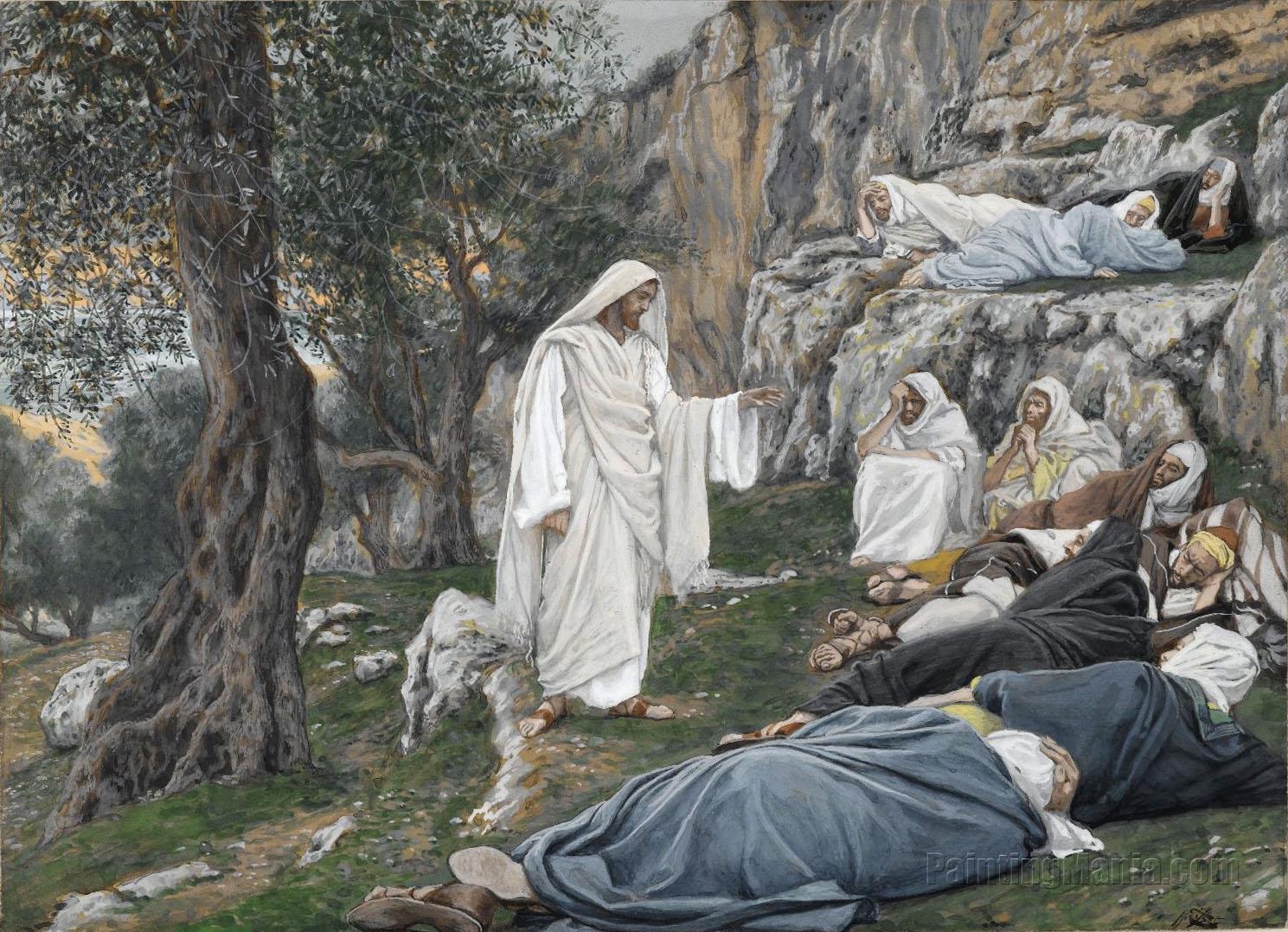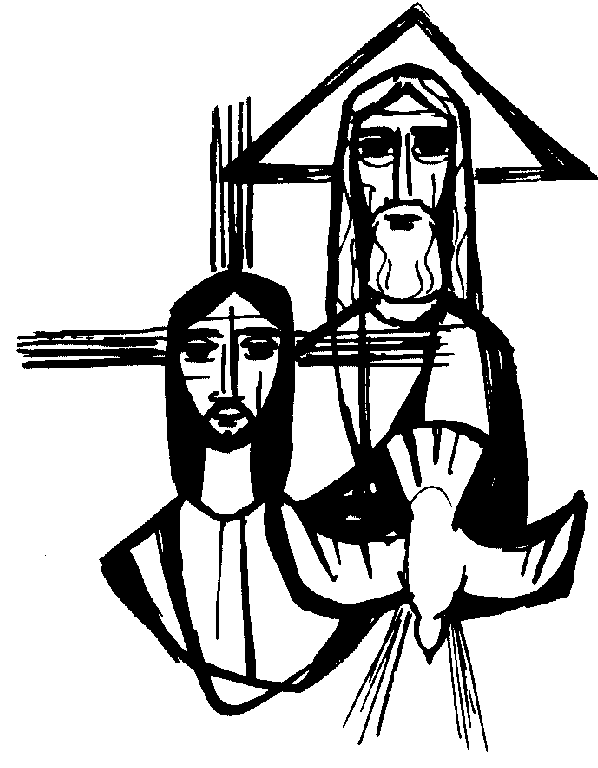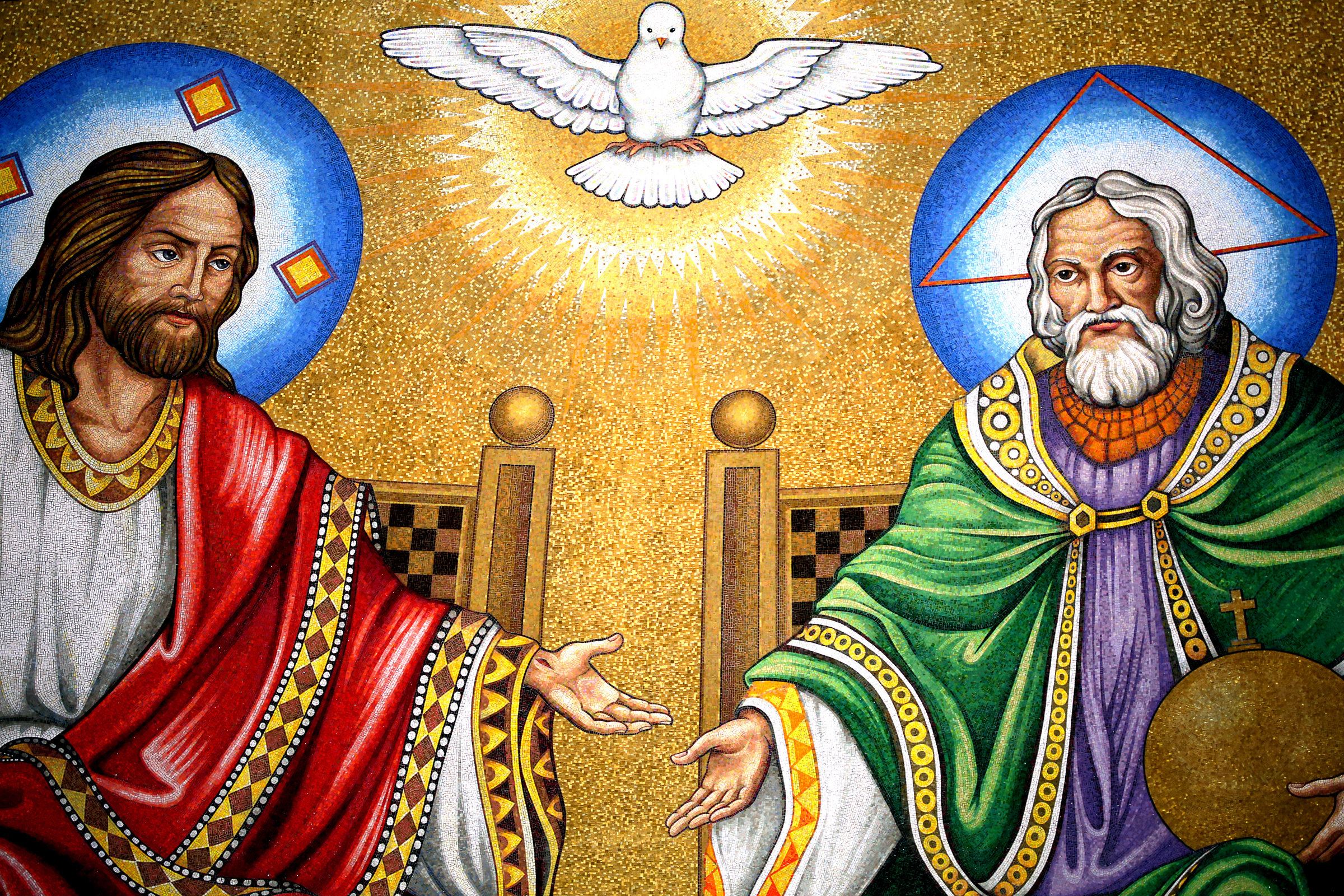 The Solemnity of the Most Holy Trinity
The Solemnity of the Most Holy Trinity
Lectionary: 165
26 MAY 2024
A.D. Reading 1
Reading 1
Dt 4:32-34, 39-40
Moses said to the people:
"Ask now of the days of old, before your time,
ever since God created man upon the earth;
ask from one end of the sky to the other:
Did anything so great ever happen before?
Was it ever heard of?
Did a people ever hear the voice of God
speaking from the midst of fire, as you did, and live?
Or did any god venture to go and take a nation for himself
from the midst of another nation,
by testings, by signs and wonders, by war,
with strong hand and outstretched arm, and by great terrors,
all of which the LORD, your God,
did for you in Egypt before your very eyes?
This is why you must now know,
and fix in your heart, that the LORD is God
in the heavens above and on earth below,
and that there is no other.
You must keep his statutes and commandments that I enjoin on you today,
that you and your children after you may prosper,
and that you may have long life on the land
which the LORD, your God, is giving you forever."
 Responsorial Psalm
Responsorial Psalm
Ps 33:4-5, 6, 9, 18-19, 20, 22
R. Blessed the people the Lord has chosen to be his own.
Upright is the word of the LORD,
and all his works are trustworthy.
He loves justice and right;
of the kindness of the Lord the earth is full.
R. Blessed the people the Lord has chosen to be his own.
By the word of the LORD the heavens were made;
by the breath of his mouth all their host.
For he spoke, and it was made;
he commanded, and it stood forth.
R. Blessed the people the Lord has chosen to be his own.
See, the eyes of the LORD are upon those who fear him,
upon those who hope for his kindness,
To deliver them from death
and preserve them in spite of famine.
R. Blessed the people the Lord has chosen to be his own.
Our soul waits for the LORD,
who is our help and our shield.
May your kindness, O LORD, be upon us
who have put our hope in you.
R. Blessed the people the Lord has chosen to be his own. Reading 2
Reading 2
Rom 8:14-17
Brothers and sisters:
For those who are led by the Spirit of God are sons of God.
For you did not receive a spirit of slavery to fall back into fear,
but you received a Spirit of adoption,
through whom we cry, "Abba, Father!"
The Spirit himself bears witness with our spirit
that we are children of God,
and if children, then heirs,
heirs of God and joint heirs with Christ,
if only we suffer with him
so that we may also be glorified with him.
 Alleluia
Alleluia
Rv 1:8
R. Alleluia, alleluia.
Glory to the Father, the Son, and the Holy Spirit;
to God who is, who was, and who is to come.
R. Alleluia, alleluia. Gospel
Gospel
Mt 28:16-20
The eleven disciples went to Galilee,
to the mountain to which Jesus had ordered them.
When they all saw him, they worshiped, but they doubted.
Then Jesus approached and said to them,
"All power in heaven and on earth has been given to me.
Go, therefore, and make disciples of all nations,
baptizing them in the name of the Father,
and of the Son, and of the Holy Spirit,
teaching them to observe all that I have commanded you.
And behold, I am with you always, until the end of the age."
 Overview of the Gospel:
Overview of the Gospel:
~This Sunday the Church celebrates the one of the great truths of our Faith: the mystery of one God in
three Persons: Father, Son, and Holy Spirit. The revealed truth of the Holy Trinity is at the very root of
the Church's living faith as expressed in the Creed. The mystery of the Trinity in itself is inaccessible to
the human mind and is the object of faith only because it was revealed by Jesus Christ, the divine Son
of the eternal Father (CCC 232, 237, 249, 253-256).
~Looking at the Old Testament with our knowledge of the New, we can see that the Trinity was
foreshadowed, though it was not taught in terms of one God in three Persons. One of the most
commonly cited intimations of the doctrine of the Trinity is that God speaks to himself in Genesis by
using a plural: "Let us make man in our image," and then we read "in the image of God he created him"
(Genesis 1:26–27). The triple cry of the seraphim in Isaiah—"Holy, holy, holy is the Lord of hosts"
(Isaiah 6:3)—is also thought to reflect the Trinity.
~This Sunday’s reading takes place after Jesus’ resurrection appearances of the first week, the last of
which was to Thomas and the other Apostles a week after Easter (John 20:26-29).
~Whereas during his earthly ministry Jesus limited his message to Israel (Matthew 10:5-6), he now
charges his disciples to make disciples of “all nations” thus fulfilling God’s promise to Abraham that “all
nations” would be blessed (Genesis 22:18; Galatians 3:80).
~Note that in directing them to make disciples of all nations, administer the Sacraments, and to teach
(verses 19-20), Jesus instructs them to do so in the “name” (singular) of the Father, Son, and Holy
Spirit. That one name is what we call the Most Holy Trinity.
 "This Trinity is one God from Whom, through Whom, and in Whom all things exist."
"This Trinity is one God from Whom, through Whom, and in Whom all things exist." ~St. Augustine
 Win a FREE Membership!
Win a FREE Membership!